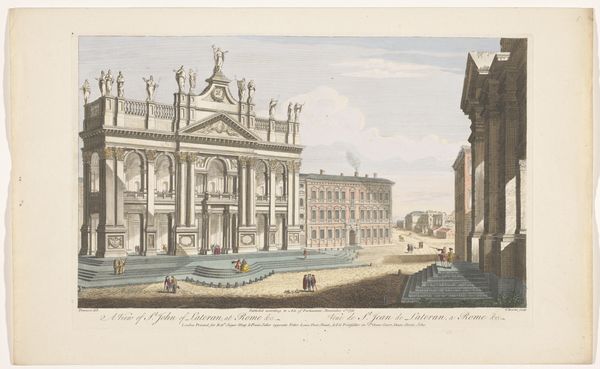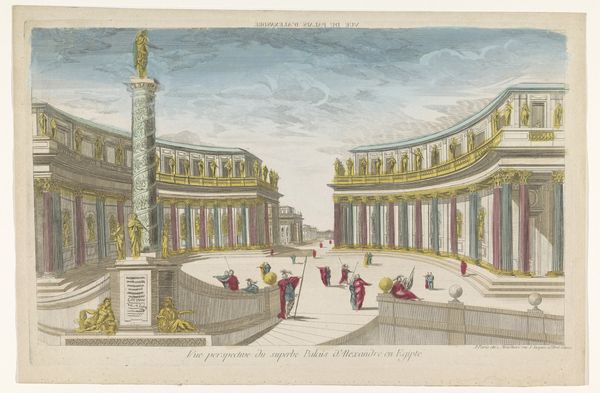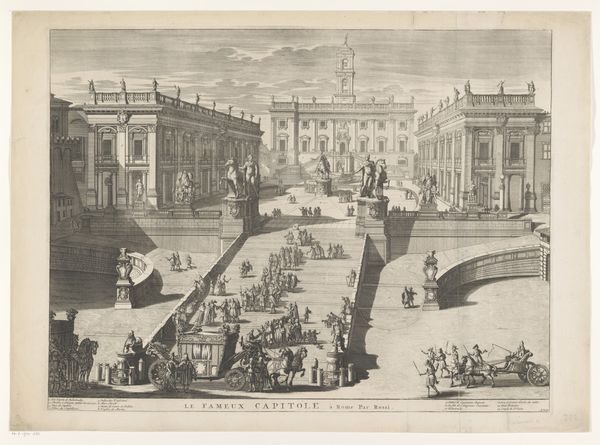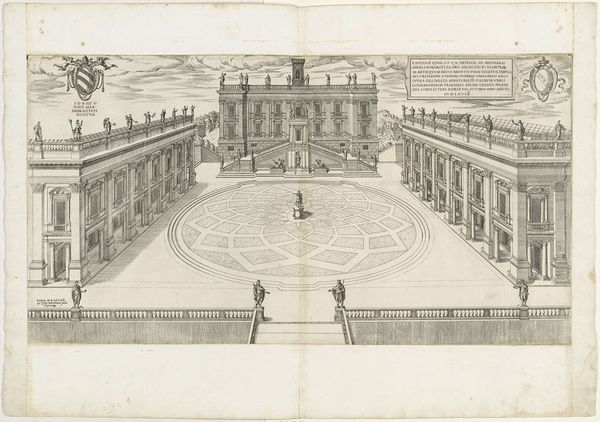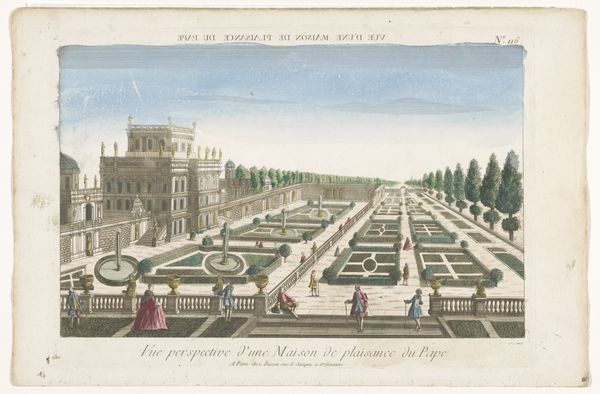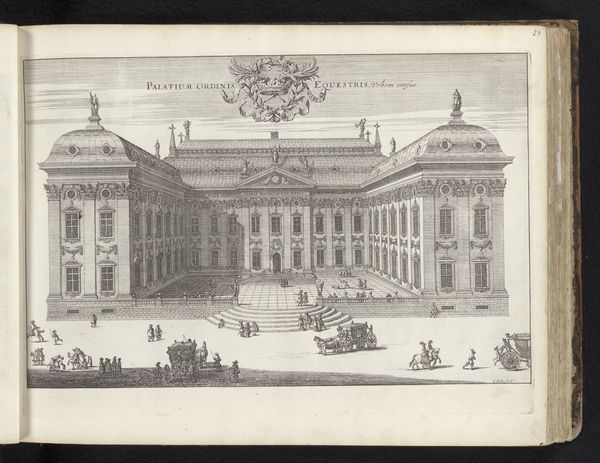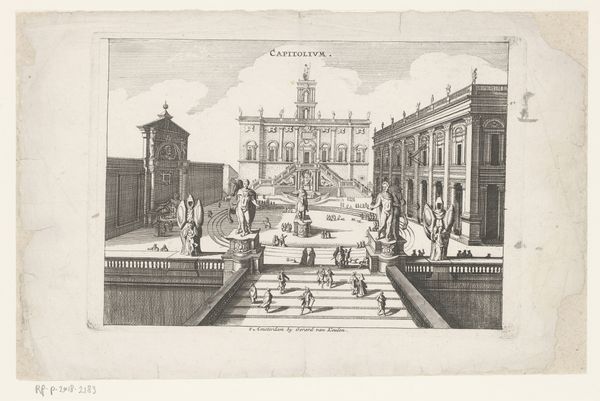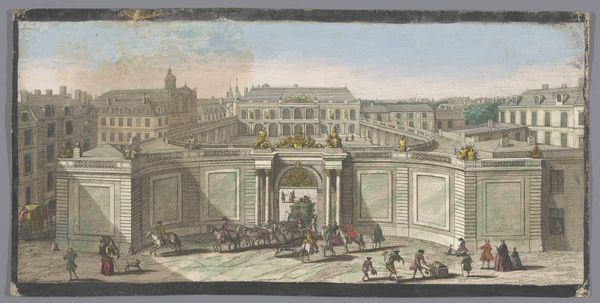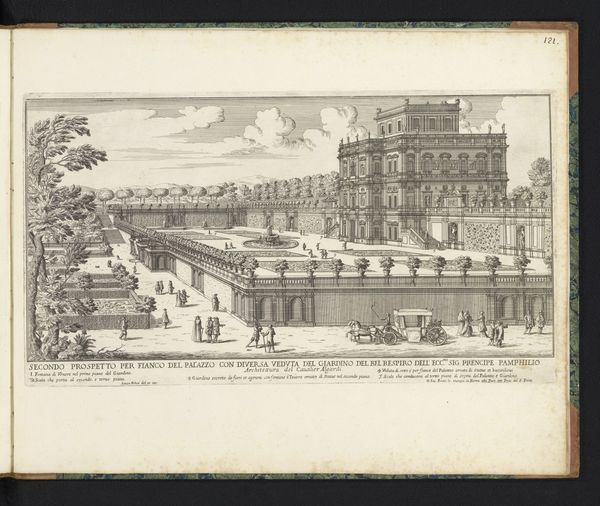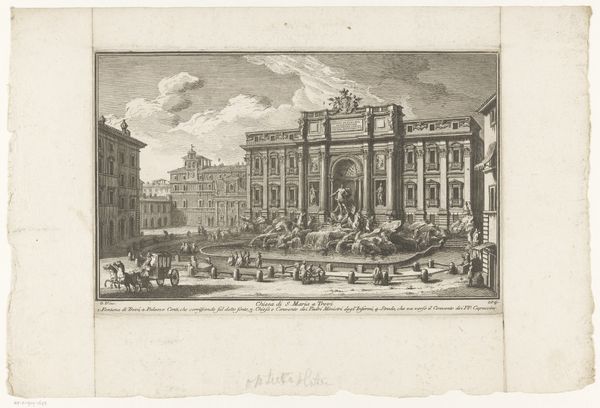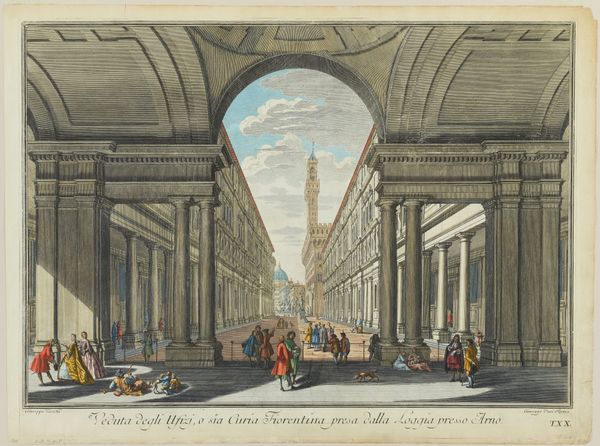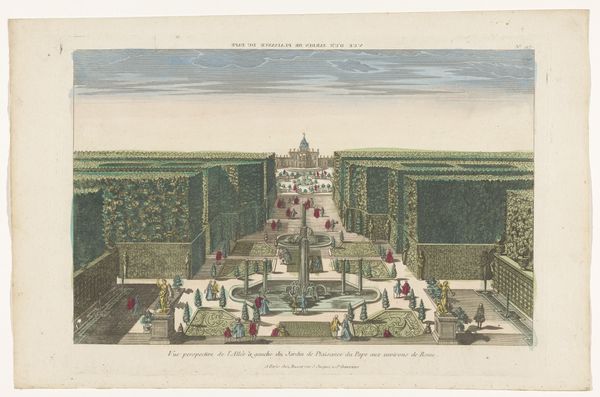
painting, engraving, architecture
#
baroque
#
painting
#
cityscape
#
engraving
#
architecture
Dimensions: height 297 mm, width 432 mm
Copyright: Rijks Museum: Open Domain
Curator: This is a striking image, isn’t it? What do you make of this "Gezicht op het Capitool te Rome," or View of the Capitoline Hill in Rome, from the 18th century? Editor: Austere. Everything about the rendering of this architectural space speaks of authority and formality. Even the little people are more like carefully positioned pieces on a board than actual figures populating the landscape. Curator: Well, you’ve put your finger on something interesting: authority. The Capitoline Hill has been a symbol of Roman power since antiquity. This image, currently held at the Rijksmuseum, presents it as this perfectly ordered and balanced vision, harking back to the Baroque emphasis on classical ideals and power structures. What is being expressed visually through such emphasis? Editor: I think that visual expression equates to permanence. The rigid perspective, the unyielding symmetry... they create an impression that Rome and its authority are timeless and immutable. This wasn’t just a depiction of a city; it was a statement of Roman resilience at a moment of shifting political powers throughout the 1700s. A perfect image for promoting papal supremacy. Curator: Exactly. The imagery taps into deeply rooted ideas of Rome as the center of civilization and law. The arrangement itself creates an almost mythic space. Consider how the buildings flanking the staircase serve like parentheses or stage wings leading us to the towering Palazzo Senatorio as a narrative. Editor: And those symmetrical staircases almost act like the arms of power, don't they? They lead towards that focal point where secular power resides but with that heavy suggestion of spiritual legitimacy. What I find interesting here, even beyond this statement about lasting dominance, is the almost surreal flatness of it. Curator: Surreal? In what sense? Editor: Everything feels deliberately flattened, the perspective just a touch too formal. It makes the whole scene appear like a meticulously arranged stage set and it speaks volumes about the nature of control—how the city itself is, in effect, a set piece in the theater of Roman dominance, arranged as much to inspire reverence as to project practical power. Curator: A very astute observation! It reveals that visual order isn’t merely aesthetic; it’s a manifestation of ideological order, meant to impress upon the viewer Rome's centrality in the world, as eternal and enduring. Editor: Which leads me to consider, how effective are these declarations through aesthetics today? In a world saturated with diverse ideologies and forms of visual expression, how do historical images like these function—still powerfully, or as beautiful but antique testaments to times long past?
Comments
No comments
Be the first to comment and join the conversation on the ultimate creative platform.

